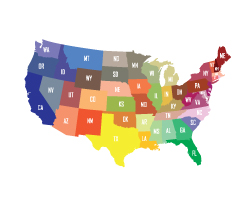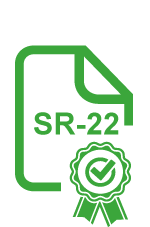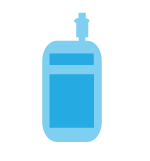Drunk Driving, DUI, DWI, OUI, OWI, DUII, DWAI, OUIL, or OMVI: each state has a different way of describing it, but no matter what you call it, you need a lawyer to help if you are charged with it.
Drunk driving arrests, drunk driving cases, and drunk driving defense lawyers seemingly have a language all their own. We have attempted to define some key terms and concepts for you here.
APS, or Administrative Per Se
In many states, there are two separate cases that arise from a single drunk driving arrest: the court case, and the Administrative Per Se, or APS case, with the Motor Vehicles Department. In cases where someone is arrested for DUI, DWI, OUI, OWI, or a related drunk driving charge, and gives a breath or blood test with results that are above the legal limit, the Motor Vehicles Department will take administrative action against the driver. NOTE: Most states limit the time a driver has to request a hearing to contest the APS action. Usually, it is just a few days. That is why it is so important to contact a lawyer right away.
Alcohol Gaze Nystagmus (AGN)
Gaze nystagmus caused by the effects of alcohol upon the nervous system.
Blood Alcohol Content or BAC
Blood alcohol content. In most states, alcohol level may be determined by reference to breath alcohol level as well, without having to convert to blood alcohol level.
Blood Alcohol Level or BAL
Breath alcohol level, or blood alcohol level. Today, many states will allow the prosecutor to try to prove the defendant’s guilt by direct reference to the breath alcohol level, rather than having to convert the breath alcohol level to blood alcohol level.
Alcohol Burnoff
The ability of the body to metabolize alcohol, and eliminate it from the system through the functioning of the vital organs. The rate of burnoff will vary from person to person, and even be different for the same person depending upon various factors. This is just one of the reasons that retrograde extrapolation is such a difficult task, and why the results are uncertain.
Caloric-Nystagmus
A vestibular system nystagmus caused by differences in temperature between the ears, e.g., one ear is irrigated with warm water and the other irrigated with cold water.
Driving
Usually, ability to exert control over the vehicle. Officers usually need not observe someone driving in order to arrest them for drunk driving. Circumstantial evidence of driving is typically sufficient to establish this element.
Drunk Driving
A general reference to those criminal cases that are called DUI, DWI, OUI, OWI, DUII, DWAI, or other acronyms. They generally describe two types of cases: first, where the driver is sufficiently impaired by alcohol, drugs, or a combination of the two, that the driver cannot drive safely. Second, “drunk driving” relates to those cases where someone is above that state’s legal limit, usually .08, no matter how safely the person is driving.
Driving Under the Influence or DUI
Driving under the influence. Can either refer to driving under the influence of alcohol, driving under the influence of drugs, or driving under the influence of a combination of liquor and drugs. This is the most widely used acronym for drunk driving cases. The standard for what it means to be under the influence will vary from state to state. It is important to contact a lawyer in your area that knows DUI law if you have been accused of DUI or a related drunk driving offense.
Driving Under the Influence of an Intoxicant or DUII
Driving under the influence of an intoxicant. The intoxicant in DUII cases can be either alcohol or other drugs. There is no difference between a charge of DUII and a DUI. A DUII charge is no more or less serious than that of a DUI. However, Oregon, the state that refers to drunk driving as DUII, does have a pre-trial diversion program that many other states do not offer. Before you get involved in any diversion program, please talk to a DUI defense lawyer, as there are pros and cons to these types of programs.
DUIL or OUIL
Driving under the influence of liquor. Operating under the influence of liquor. This is a phrase that is used in very few states; most notably, it is sometimes used in Massachusetts, Michigan, or Utah to refer to a drunk driving case.
Driving While Abilities Impaired or DWAI
Driving while abilities impaired. This acronym is used in Colorado to refer to a lesser charge that is related to drunk driving but does not carry all of the same consequences and punishments. A DWAI conviction, in those few states that offer DWAI, may not be considered a prior conviction for drunk driving purposes in other states. It is important to consult a drunk driving lawyer that is well-versed in this area of the law to ensure your rights are protected.
Driving While Intoxicated or DWI
Driving while intoxicated, or driving while impaired. Like DUI, DWI can refer to driving while intoxicated or impaired as the result of either drinking alcohol or taking drugs, or both. This is the second most widely used acronym for drunk driving cases. Like DUI, the question of how to define being intoxicated or impaired is at the heart of a drunk driving case in jurisdictions that use DWI. It is critical to consult with a DWI lawyer in your area that understands these sophisticated issues.
Driving While Under the Influence or DWUI
Driving while under the influence is a phrase that is infrequently used to refer to drunk driving cases. When this acronym is used, it refers to driving under the influence of alcohol, driving under the influence of drugs, or driving under the influence of a combination of alcohol and drugs.
Enhancements or DUI Punishment Enhancements
Those factors can operate to increase the punishment in a drunk driving, DUI, DWI, OUI, OWI, or related driving under the influence case. These enhancements may include driving above a certain speed while DUI, having minors in the car while drunk driving, having a BAC above a certain level (.20, for example), refusing to take a chemical test after being arrested for DUI, being involved in a traffic accident while DUI or DWI, or having prior convictions for DUI, DWI, or a related drunk driving offense.
Epileptic Nystagmus
Nystagmus evident during an epileptic seizure.
Field Sobriety Test (FST)
Any number of tests used by law enforcement officers, usually on the roadside, to determine whether a driver is impaired. Most FSTs test balance, coordination and the ability of the driver to divide his or her attention among several tasks at once. Other tests, such as the horizontal gaze nystagmus test, are used to measure a subject’s impairment level.
Eye Fixation
The ability of the eye to focus on one point.
Gaze Nystagmus
Nystagmus occurs when the eyes gaze or fixate upon an object or image. Usually caused by a disruption of the nervous system.
Guilty Plea
What you admit to the charges and evidence against you
Horizontal Gaze Nystagmus (HGN)
Gaze nystagmus occurs when the eyes gaze or move to the side along a horizontal plane.
Impairment or Intoxication
Those states that refer to Driving While Intoxicated (DWI) or Driving While Impaired (DWI) usually have definitions that are similar to being under the influence. Each state has a different standard, so it is extremely important to contact a drunk driving lawyer in the state where you were arrested.
Jerk Nystagmus
Nystagmus where the eye drifts slowly away from a point of focus and then quickly corrects itself with a saccadic movement back to the point of focus.
Motions
Asking the court to do something. Drunk driving defense lawyers will usually file many motions with the court in defending a driver accused of DUI, DWI, OUI, OWI, or a related drunk driving offense. These motions may include discovery motions (to force the prosecutor to turn over evidence), motions to suppress evidence, motions to dismiss the case, and many others.
National Highway Traffic Safety Administration (NHTSA)
The agency within the United States Department of Transportation that administers traffic safety programs. NHTSA’s duties include funding studies on field sobriety tests and training law enforcement officers in the administration of the standardized field sobriety test battery.
Natural Nystagmus
Nystagmus that occurs without any apparent physiological, vestibular, or neurological disturbance. Natural nystagmus occurs in approximately 2%-4% of the population.
Neurological Nystagmus
Nystagmus caused by some disturbance in the nervous system.
Not Guilty
The verdict you hope to hear in your DUI, DWI, or drunk driving case after being represented by one of our well-qualified DUI defense lawyers.
No Contest Plea
When you do not admit guilt but admit the truth to the facts alleged in the indictment, information, or complaint (the so-called “charging” documents that start a criminal or traffic case). No-contest pleas are sometimes known as “nolo contendere” or just “nolo” pleas.
Nystagmus
An involuntary bouncing or jerking of the eye caused by any number of vestibular, neurological, or physiological disturbances.
Oculomotor
Movement of the eyeball.
Operating a Motor Vehicle While Intoxicated or OMVI
Operating a motor vehicle while intoxicated, or operating a motor vehicle while impaired. Intoxication or impairment may be caused by drinking alcohol, taking drugs, or a combination of alcohol and drugs in those states that use OMVI as an acronym for drunk driving.
One-Leg-Stand (OLS) test
One of the three tests that make up the standardized field sobriety test battery. This test requires a subject to stand on one leg, look at his or her foot and count out loud to thirty. The subject is assessed on the ability to understand and follow instructions as well as the ability to maintain balance for thirty seconds. [post-publication note (August 1999), sentence should read: “…count out loud until told to stop.”]
Optokinetic Nystagmus
A nystagmus evident when an object that the eye fixates upon moves quickly out of sight or passes quickly through the field of vision, such as occurs when a subject watches utility poles pass by while in a moving car. Optokinetic nystagmus is also caused by watching alternating moving images, such as black and white spokes on a spinning wheel.
Oscillate
To move back and forth at a constant rate between two points.
Operating Under the Influence or OUI
Operating under the influence. Like the other acronyms, OUI can refer to operating a motor vehicle under the influence of alcohol, drugs, or both. Whether or not someone is under the influence is a complicated question, and many factors must be considered in making that determination.
Operating While Intoxicated or OWI
Operating while intoxicated, or operating while impaired. Again, this intoxication or impairment may be as the result of consuming alcohol or any other drug, or a combination of alcohol and drugs.
Pathological Disorder
Nystagmus where the eye oscillates or swings equally in two directions.
Pendular Nystagmus
Laws that declare it illegal to drive a vehicle above a certain alcohol level, as measured by a blood or breath test. In most states, the per se limit is .08% or greater. Violating the per se law has nothing to do with one’s ability to drive a car safely; it is based solely on body chemistry. The only question is whether the driver was above the legal limit at the time of driving. NOTE: since breath or blood testing always takes place after the time of driving, it does not directly answer the question of BAL at the time of driving. The alcohol level at the time of testing may be higher, lower, or the same, when compared to the time of driving.
Per Se Laws
Laws that declare it illegal to drive a vehicle above a certain alcohol level, as measured by a blood or breath test. In most states, the per se limit is .08% or greater. Violating the per se law has nothing to do with one’s ability to drive a car safely; it is based solely on body chemistry. The only question is whether the driver was above the legal limit at the time of driving. NOTE: since breath or blood testing always takes place after the time of driving, it does not directly answer the question of BAL at the time of driving. The alcohol level at the time of testing may be higher, lower, or the same, when compared to the time of driving.
Physiological Nystagmus
A nystagmus that occurs so that light entering the eye will continually fall on non-fatigued cells on the retina. Physiological nystagmus is so slight that it cannot be detected without the aid of instruments and it occurs in everyone.
Positional Alcohol Nystagmus (PAN)
Positional nystagmus when the foreign fluid is alcohol.
PAN I
The alcohol concentration is higher in the blood than in the vestibular system.
PAN II
The alcohol concentration is lower in the blood than in the vestibular system.
Positional Nystagmus
Nystagmus that occurs when a foreign fluid is in unequal concentrations between the blood and the fluid in the semi-circular canals of the vestibular system.
Post-Rotational Nystagmus
Nystagmus caused by disturbances in the vestibular system fluid when a person spins around. Post-rotational nystagmus lasts for only a few seconds after a person stops spinning.
Reasonable Doubt
The definition varies from state to state. Before someone may be found guilty of DUI or DWI, the jury (or judge in those states that do not allow a jury trial for drunk driving cases) must be convinced in the defendant’s guilt beyond a reasonable doubt. It represents the highest legal standard in our country; it generally requires an abiding conviction (long-lasting belief) in the truth of each and every element of the charges.
Resting Nystagmus
is referred to as jerking of the eyes as they look straight ahead. Its presence usually indicates a pathological disorder or high doses of a Dissociative Anesthetic drug such as PCP
Retrograde Extrapolation
This is the scientific term for the ability to look at someone’s alcohol level at the time of testing and look backward to determine what the alcohol level was at the time of driving.
Rising Alcohol Defense
This defense is based on the idea that alcohol levels change over time, as the body absorbs alcohol, reaches a peak level, and then eliminates alcohol. Breath or blood testing is done after driving (sometimes long after); these test results tell us what the alcohol level is at the time of testing, not at the time of driving. The rising alcohol defense is simply that at the time of driving (the critical time in a drunk driving case), the alcohol level was below the legal limit, even if it continued to rise until the time of testing.
Rotational Nystagmus
Nystagmus caused by disturbances in the vestibular system fluid when a person spins around. Rotational nystagmus occurs while the person is spinning.
Saccadic
Movement of the eye from one fixation point to another.
Smooth Pursuit
The eye’s course as it tracks a moving image.
Southern California Research Institute (SCRI)
A research organization that conducted the first two research studies that eventually produced the standardized field sobriety test battery. SCRI has conducted subsequent field sobriety test validation studies as well as drug recognition evaluation studies.
Standardized Field Sobriety Test (SFST)
A group of tests selected as the best field sobriety tests to increase the ability of law enforcement officers to detect driver impairment. The results of this battery, usually administered along the roadside, contribute extensively to a law enforcement officer’s decision to arrest a person for impaired driving.
Under the Influence
The precise definition used in court will vary from state to state; however, it will relate to the inability of the driver to operate a motor vehicle with the same caution characteristic of a sober person of ordinary prudence under the same or similar circumstances. It is not necessary for someone to have an alcohol level that is above the legal limit to be under the influence. However, most states do allow a jury to infer or presume that if someone is above the legal limit at the time the test was taken, and if the test was given close in time to the time of driving (within two or three hours), that the driver is under the influence. The manner in which the vehicle is driven is relevant, but not usually determinative in and of itself.
Vehicle
A motor vehicle, car, truck, motorcycle. In some states, a DUI, DWI, or drunk driving conviction can result from driving a bicycle, riding a horse, driving a snowmobile, or even a motorized wheelchair.
Vertical Nystagmus
Nystagmus occurs when the eyes gaze or move upward along a vertical plane.
Vestibular System
The system of fluid-filled canals located in the inner ear that assists in balance, coordination, and orientation.
Vestibular System Nystagmus
Nystagmus occurs when the eyes gaze or move upward along a vertical plane.
Voir Dire
Jury selection. In those states that allow a jury trial for drunk driving cases, either the lawyers or the judge (or both) will question potential jurors about their background and qualifications to sit as jurors in the case. This process is called voir dire and is extremely important in defending a DUI, DWI, or related drunk driving case. Both the prosecution and the defense are entitled to fair and unbiased jurors, in those states that allow jury trials in DUI, DWI, or drunk driving cases. Voir dire is the process by which the parties learn about the potential jurors, and determine whether or not the drunk driving case is a proper one for the potential juror to hear.
Walk-and-Turn (WAT) Test
One of the three tests that make up the standardized field sobriety battery. This test requires a person to take nine heel to toe steps down a straight line, turn and take nine heel to toe steps back up the line. The subject is assessed on the ability to understand and follow instructions as well as the ability to maintain balance during the instruction stage and walking stage.







